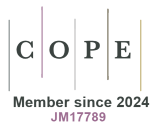Most read articles by the same author(s)
- Massimo Allegri, Carlo Lucioni, Silvio Mazzi, Giulio Serra, Social cost of chronic pain in Italy , Global and Regional Health Technology Assessment: Vol. 2 No. 1 (2015): January-April 2015
- Carlo Lucioni, Sergio Iannazzo, Silvio Mazzi, Giorgia Saporiti, Silvia Chiroli, Cost-effectiveness of ponatinib in chronic myeloid leukemia in Italy , Global and Regional Health Technology Assessment: Vol. 2 No. 1 (2015): January-April 2015
- Carlo Lucioni, Silvio Mazzi, Elisa Rossi, Rita Rielli, Silvia Calabria, Aldo Pietro Maggioni, Therapeutic Strategies and Health Costs of Patients Admitted for a Cardiovascular Event in Italy , Global and Regional Health Technology Assessment: Vol. 3 No. 2 (2016): May-August 2016
- Nicoletta Martone, Carlo Lucioni, Silvio Mazzi, Valeria Fadda, Cost-Effectiveness Evaluation of Oncological Drugs Newly Marketed in Italy , Global and Regional Health Technology Assessment: Vol. 1 No. 2 (2014): July-December 2014
- Clement Tournier, Valerie Deroo, Sara Villa, Giovanni Giuliani, Carlo Lucioni, Silvio Mazzi, Roberto Ravasio, An Approach to Evaluate Payment-by-Results Agreements , Global and Regional Health Technology Assessment: Vol. 3 No. 2 (2016): May-August 2016
- Carlo Lucioni, Claudio Jommi, Value of health technologies, HTA and decisions , Global and Regional Health Technology Assessment: Vol. 4 No. 1 (2017): January-December 2017
- Nicoletta Martone, Carlo Lucioni, Silvio Mazzi, Valeria Fadda, New Oncological Drugs: Analysis of Survival Gain , Global and Regional Health Technology Assessment: Vol. 1 No. 1 (2014): January-June 2014
- Carlo Lucioni, Silvio Mazzi, Roberto Caporali, Budget impact analysis of infliximab biosimilar: the Italian scenery , Global and Regional Health Technology Assessment: Vol. 2 No. 2 (2015): May-August 2015
- Carlo Lucioni, The Meaning of a Title: Global & Regional Health Technology Assessment , Global and Regional Health Technology Assessment: Vol. 1 No. 1 (2014): January-June 2014









